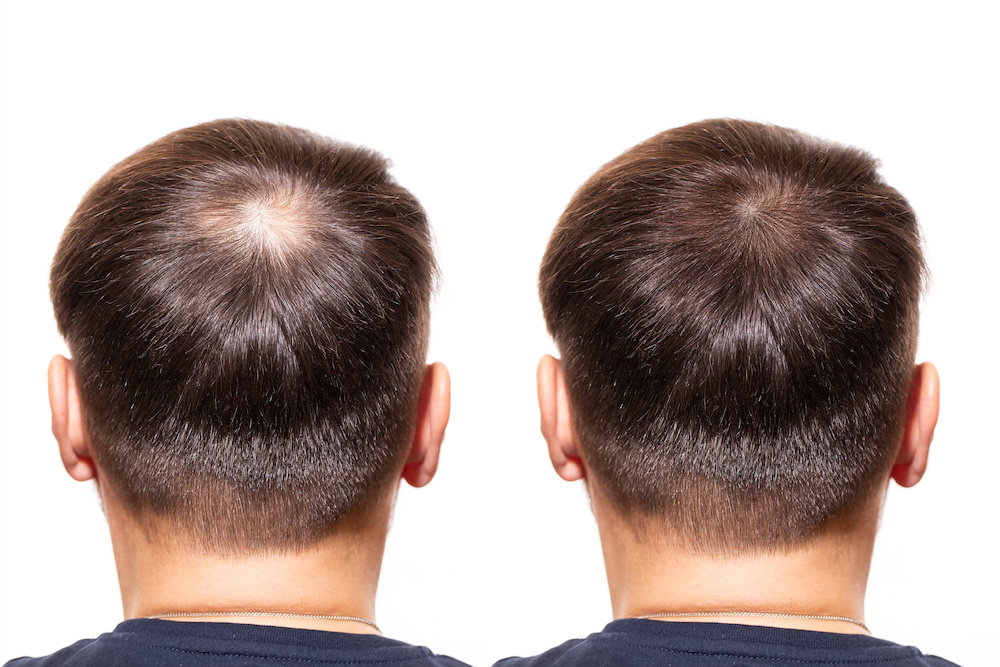How Does Platelet-Rich Plasma Therapy (PRP) Work for Hair Loss?

When it comes to hair loss, many individuals prefer not to talk about this potentially embarrassing situation. But the truth of the matter is, hair loss is more common than you might think. In fact, many people are dealing with hair loss, and are actively trying to find ways to combat the hair loss so that they might find a way to either slow the process, eliminate the problem altogether, or even regrow hair that they may have already lost.
While it might seem like a concern that you may not want to address, it is important to talk to your doctor if your hair loss is bothering you. There are many new ways to treat hair loss, including Platelet-Rich Plasma Therapy for hair loss – a part of the PRP system.
What is the PRP System?
The PRP System, or Platelet-Rich Plasma system, is a system of treatments that use PRP technology in order to treat certain concerns. These include concerns from skin problems such as fine lines and wrinkles, sports injuries, and even hair loss treatments. By using the patient’s own plasma, there is less of a chance for the body to reject the treatments and a greater chance of them being successful.
How is PRP Therapy Done?
Before learning how PRP works for hair loss, it is important to know how the process works in general. PRP is a process that is done at your doctor’s office. First, a small sample of blood is taken from the patient’s body by a trained professional. After taking the blood, the tubes are placed into a small centrifuge, which will separate the blood from the platelet-rich plasma inside. Once separation has occurred, the platelet-rich plasma is drawn into a syringe and is ready for use.
PRP For Hair Restoration
When it comes to hair loss, PRP is being looked at as a new treatment that has a high success rate. PRP for hair restoration can be used to treat issues such as male pattern baldness, but it can also be used to encourage new hair growth after hair transplants because it stimulates the hair follicles and the surrounding area, thus encouraging hair growth.
How is PRP For Hair Restoration Performed?
After the initial blood draw and separation of plasma and platelets from the blood, this platelet-rich plasma can then be used to help with hair regrowth. Numbing cream is applied to the area on which the procedure is to be performed on the scalp before any injections are delivered. This minimizes discomfort and any anxiety that the patient may have regarding the procedure. After the numbing cream is at full effect, the injections are then given.
Once the doctor finds the areas that should be treated, the injections will begin. Since the needle is very small, such as those used for injections like Botox and other fillers, you can rest assured that the procedure will be relatively pain-free and should not leave too much in terms of bruising or swelling (although some bruising and swelling may, of course, still occur).
Important Information About PRP For Hair Restoration
PRP for hair restoration works best on those who still have functioning, intact hair follicles. Those with weak hair growth, meaning the hair grows, only not as well, are the best candidates for this treatment. Your doctor will examine the area and recommend treatment if he or she thinks that this treatment would be best for you.
When it comes to seeing results, you should expect to see some within five or six months after treatment. Multiple treatments may be necessary, especially when it comes to stubborn cases. Also, the results are not permanent – meaning you will still need additional follow-up treatments. These treatments can usually be administered annually and will help keep up the results that you get.
If you would like to schedule a consultation or an appointment or to learn more about how the PRP system works for hair restoration, call the office of Dr. Ghozland today at 310-393-9359!
